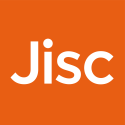ANÁLISIS DE UN DESTINO CULTURAL Y NATURAL: WADI RUM (JORDANIA)
Resumen
Exploramos el turismo y el contexto geográfico y cultural de la región jordana de Wadi Rum, que integra una rica historia e impresionantes paisajes naturales. El turismo comenzó en Wadi Rum tras la creación del estado de Jordania en 1946. Debido a la importancia geológica de la región, Wadi Rum se incluyó en la lista de reservas naturales del Patrimonio Mundial de la UNESCO, lo que incrementó el turismo en la región. La belleza del paisaje y su importancia histórica han atraído la atención del cine, sobre todo de las películas Lawrence de Arabia y Marte. Los resultados ponen de relieve la gran importancia del sector turístico en Wadi Rum y Jordania, en especial para la generación de empleo. También, señalamos la especial repercusión que tienen los impactos de la situación política internacional del entorno de Oriente Próximo en Wadi Rum y Jordania.
Descargas
-
Resumen335
-
PDF INGLÉS 268
-
PDF ESPAÑOL268
Citas
Abdulhalim, H., Abdulhawa, T., Cummings, T & Osipova, E. (2015). Tabe’a II report: enhancing regional capacities for World Heritage, International Union for Conservation of Nature (IUCN), UNESCO.
Aletihad Newspaper (07.10.2024). 384.000 housing units damaged in Israeli shelling on Gaza. Aletihad Newspaper. https://acortar.link/9LBknM
Alghad Newspaper (25.12.2015). Wadi Rum: Enchanting sands that take you to a world of fantasy. Alghad Newspaper. https://goo.su/K1Pq
Alsayed, W. (2024). Impact of the Tourism Industry on Economic Growth in Gulf Cooperation Council (GCC) Countries. International Journal of Tourism Research, 26(5). http://hdl.handle.net/20.500.14131/1500
Bader, M., Mustafa, M., Al Rousan, R., & Ibrahim, H.M. (2024). Crisis management as a driver of sustainable tourism in Jordan: Evaluating performance of Jordanian tourism public policies during crisis before and after Covid-19. Geojournal of Tourism and Geosites, 53 (2), 743–751. https://doi.org/10.30892/gtg.53238-1250
Baviere, G. (2011). Wadi Rum, Jordanie. Vue depuis le sommet de la grande dune. Flickr. https://acortar.link/EWV7Tv
Bazazo, I. (2021). Jordanian tourism in a hundred years. Ministry of Culture Publications of the Jordanian State Centenary.
Bille, M. (2012). Assembling heritage: investigating the UNESCO proclamation of Bedouin intangible heritage in Jordan. International Journal of Heritage Studies, 18 (2), 107–123. https://doi.org/10.1080/13527258.2011.599853
Brand, L. A. (2001). Development in Wadi Rum? State bureaucracy, external funders, and civil society. International Journal of Middle East Studies, 33 (4), 571–590. https://doi.org/10.1017/S0020743801004056
Caton, S. C. (2023). Lawrence of Arabia: a film's anthropology. University of California Press, USA. https://doi.org/10.1525/aa.2001.103.2.563
Chatelard, G. (2003). Conflicts of interest over the Wadi Rum reserve: were they avoidable? A socio-political critique. Nomadic Peoples, 7 (1), 138–158. https://doi.org/10.3167/082279403782088787
Dudley, D., & Reeves, M. B. (2013). Immersed in Grandeur: The Eastern Complex at Wadi Rum. In Desert and Man. Edit: Saba Fares. University of Nancy, France. Available: https://acortar.link/EWV7Tv
Gentry, R. S. (2017). The Transformation of Nabataea: Economic transformation in the late first century BC and First Century AD. Thesis. Raleigh, North Carolina University.
Goudie, A., & Seely, M. (2011). World heritage desert landscapes: potential priorities for the recognition of desert landscapes and geomorphological sites on the World Heritage List. International Union for Conservation of Nature (IUCN), UNESCO
Groom, K.M., Beven, G., Al-Noaimat, S., Al-Zalabiah, M., & Allen, C. D. (2022). Community Engagement in Geologic Assessments of Thamudic Inscriptions and Petroglyphs in the Wadi Rum Protected Area, Jordan. In Global Perspectives for the Conservation and Management of Open-Air Rock Art Sites, (pp. 302-316). Eds. Routledge. https://doi.org/10.4324/9780429355349
Hall, C. M. (2021). Constructing sustainable tourism development: The 2030 agenda and the managerial ecology of sustainable tourism. In Activating critical thinking to advance the sustainable development goals in tourism systems (pp. 198–214). Eds. Routledge. https://doi.org/10.4324/9781003140542
Wadi Rum. Protected Area (2014). Protected Area. In the South of Jordan. Government of Jordan. http://wadirum.jo/ar/about-wadi-rum-2/a-brief-history/
Hoffman, R. U. (2024). Jordan and the Refugee Crisis: Impact on the Host Nation. Thesis. University of Exeter, U.K. https://acortar.link/5AZpIX
Howard, T. (1997). Treks and Climbs in Wadi Rum, Jordan. U.K., Cicerone Press.
Kanaan, Y. (2022). Camel Imagery in Pre-Islamic Wadi-Rum Rock Art: Translating Social Identity through Material Traces. Thesis. Concordia University, Montreal, Quebec, Canada
Kayali, H. (2023). Arabs and Young Turks: Ottomanism, Arabism, and Islamism in the Ottoman Empire, 1908-1918. University of California Press. USA.
Khdeir, A.M.F.M. (2024). The Image of Jordan as a Local Tourism Destination: An Exploratory Study on Jordanian Tourists. Izmir University of Economics, Turkey, Thesis.
The American Magazine (1947, November). Interview of King Abdullah, Available: Interview of King Abdullah.
Mandic, A., Mrnjavac, Ž, & Kordic, L. (2018). Tourism infrastructure, recreational facilities and tourism development. Tourism and Hospitality Management, 24 (1), 41–62. https://doi.org/10.20867/thm.24.1.12
Mansour, J. (2006). The Hijaz-Palestine railway and the development of Haifa. Jerusalem Quarterly, (28).
Moaz, A.A., Tabbaa, Y., Takieddine, Z., Daiber, V., Bakkour, D., Hasan, H., Mayor, B. & Michaudel, B. (2015). The Ayyubid Era. Art and architecture in medieval Syria. Museum with No Frontiers, MWNF (Museum Ohne Grenzen), Vienna, Austria.
Rough Guides (2021). Wadi Rum. Rough Guides Publisher, United Kingdom. https://www.roughguides.com/jordan/aqaba-southern-desert/wadi-rum/
Salibi, K. S. (1998). The modern history of Jordan. IB Tauris, New York, USA.
Saunders, N. J. (2020). Desert insurgency: Archaeology, TE Lawrence, and the Arab revolt. Oxford University Press.
Strachan, L. M. (2012). The Bedouin Know: Using Local Knowledge to Understand the Effects of Development at the Wadi Rum Protected Area in Southern Jordan. Thesis, University of Manchester (United Kingdom).
Ministry of Tourism and Antiquities (2024a). Welcome to Jordan. Ministry of Tourism and Antiquities, Government of Jordan. Available: https://welcomejordan.com/
Ministry of Tourism and Antiquities (2024b). Tourism statistics. Ministry of Tourism and Antiquities.
Ministry of Tourism and Antiquities (2024c). Tourism data in Jordan. Ministry of Tourism and Antiquities, Government of Jordan.
The World Factbook 2024 (2024). Jordan, Washington, DC: Central Intelligence Agency, 2024. Available: https://www.cia.gov/
Tholbecq, L. (1998). The Nabataeo-Roman Site of Wadi Ramm (Iram): A New Appraisal. Annual of the Department of Antiquities of Jordan, 42, 241–254.
Tschubby (2018). Reliefkarte Jordanien, Wikipedia. https://es.wikipedia.org/wiki/Archivo:Reliefkarte_Jordanien.png
Van Der Steen, E. J. (2019). The archaeology of Jordan: A condensed history. Journal of Eastern Mediterranean Archaeology & Heritage Studies, 7 (2), 149-164. https://doi.org/10.5325/jeasmedarcherstu.7.2.0149
Werner, B. (2009). Wadi Rum, ruins of a Nabataean temple (picture), Wikipedia. https://es.m.wikipedia.org/wiki/Archivo:Wadi_Rum_BW_6.JPG
World Heritage Convention (2010). Wadi Rum Protected Area A Proposal for Inclusion in the World Heritage List |UNESCO. Wadi Rum Protected Area. Available: https://whc.unesco.org/en/list/1377/documents/
World Tourism Organization (UNWTO) (2023), Compendium of Tourism Statistics Dataset, UNWTO, Madrid.
World Tourism Organization (UNWTO) (2024), World tourism barometer: January 2024, UNWTO, Madrid.
World Travel & Tourism Council (2024). Travel & tourism economic impact 2024: Global trends. World Travel & Tourism Council.
Yousef, M. (2024). Tourism in Jordan's Economy: Growth, Challenges, and Future Prospects. International Multilingual Academic Journal, 1(1).
Derechos de autor 2025 Cuadernos de Turismo

Esta obra está bajo una licencia internacional Creative Commons Atribución-NoComercial-SinDerivadas 4.0.
Las obras que se publican en esta revista están sujetas a los siguientes términos:
1. El Servicio de Publicaciones de la Universidad de Murcia (la editorial) conserva los derechos patrimoniales (copyright) de las obras publicadas, y favorece y permite la reutilización de las mismas bajo la licencia de uso indicada en el punto 2.
2. Las obras se publican en la edición electrónica de la revista bajo una licencia Creative Commons Reconocimiento-NoComercial-SinObraDerivada 3.0 España (texto legal). Se pueden copiar, usar, difundir, transmitir y exponer públicamente, siempre que: i) se cite la autoría y la fuente original de su publicación (revista, editorial y URL de la obra); ii) no se usen para fines comerciales; iii) se mencione la existencia y especificaciones de esta licencia de uso.
3. Condiciones de auto-archivo. Se permite y se anima a los autores a difundir electrónicamente las versiones pre-print (versión antes de ser evaluada) y/o post-print (versión evaluada y aceptada para su publicación) de sus obras antes de su publicación, ya que favorece su circulación y difusión más temprana y con ello un posible aumento en su citación y alcance entre la comunidad académica. Color RoMEO: verde.





_.jpg)








